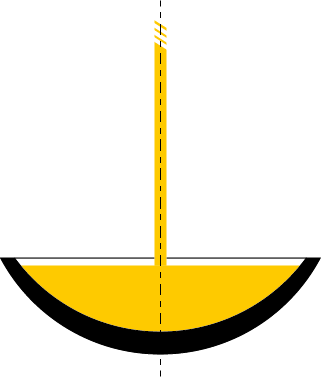Richard Butcher works in collaboration with designers, architects, makers, businesses and entrepreneurs to help develop solutions to problems.
Often this pursuit of new and original ideas requires proof of concept models and prototypes. This is where the Hustwaite Butcher studio and workshop in Brunswick comes into its own. Models, maquettes and full sized test beds help develop and refine ideas to a point where they can be integrated into business plans, production models and funding ventures.
The case below demonstrates one such project - a work in progress.
-
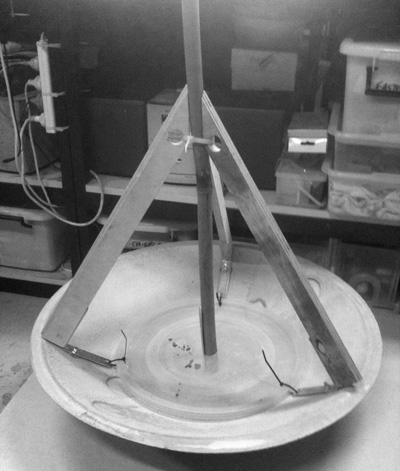
Prototype casting
First casting off the blocks. Early tripod mock-up to support bamboo.
-
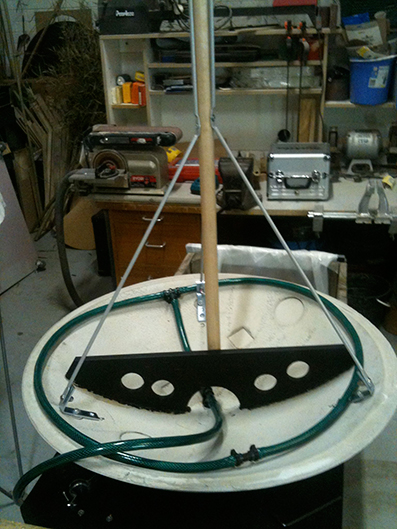
Refined support structure
Tripod structure has been streamlined and pump mount built in to pot. Water is pumped up through the centre of the pot to drip/spray nozzles.
-
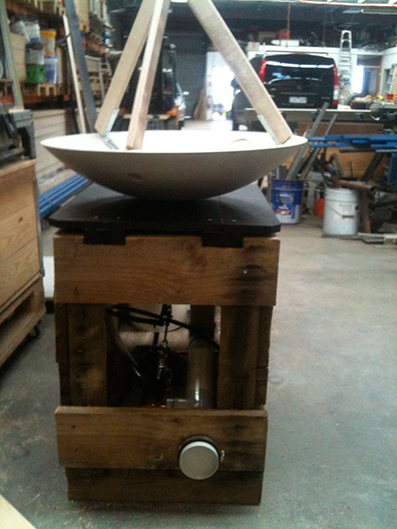
Test bed
The prototype has been developed around a standard half apple crate with the pot sitting atop the crate for maximum effect. Here the water reservoir (PVC pipe) and pump drive is tucked away inside the crate.
'Power Plant' is an innovative new 'generator' developed by studioButcher in Melbourne, Victoria. This exciting new product is available as an off-the-shelf installation or as freely available plans for anyone wishing to grow their own power plant. The design is powered by plants and their interaction with wind. The plant grows in a planter pot which is designed to rock in the breeze - and the subsequent movement is harnessed as a form of power.
The power plants are can be arranged in any configuration - as a singlr plant or as an array of many plants, such as an array of 10 plants working together. The resultant array of pots acts as a windfarm grown from locally sourced and appropriate plant seedlings or cuttings. In addition, the array acts as a place for peaceful meditation and contemplation.
The power type is not restricted by any particular technology, and can be chosen (and modified) by the owner dependent upon their needs, location, environment and available resources. Integral to the power plants is a simple engineering and implementation methodology which is enhanced by user interaction. This allows for experimentation and re-engineering by an open and participatory community.
The first of these types has been developed within a raised garden bed. It's a simple foundation for the Power Plant - an apple crate system of horticulture well suited to medium and high density urban environments. studioButcher rents boxes at the Pop-Up Patch to complement a city apartment lifestyle.
-

Pop-Up Patch
Community gardens situated at Federation Square East in Melbourne, Victoria.
Everyone interested in hands-on DIY self sustaining lifestyles.
We reckon 'Power Plant' is perfect for:
- creating beautiful garden spaces.
- creating peaceful dynamic sculptures.
- watering gardens by wind power.
- experimenting with the future of wind power.
- showcasing energy solutions in educational environments.
- roof-top gardens.
- dynamic and functional installations for public spaces.
- developing diverse social models of appropriate design and development.
Start growing your own power plant this season. We offer a range of options to get you started. Get in touch for more personalised information.
Monolithic power generation infrastructure is proving to be problematic around the world. Power installations ranging from coal fired to nuclear along with large renewable installations such as solar, tidal and wind turbine farms all have their detractors. This design takes a different route.
The early questions: 'Is it possible to grow a wind farm?' and 'How would a reed bed tidal generator work?' The land based question has been the focus to date. Research studies here and here indicate tree oscillation within modelled wind scenarios are affected primarily by canopy geometry and topology.
Not a huge amount of research has been conducted around the premise of this project other than a search to remediate wind damage from storms. For example, in this paper a finite element (FE) simulation method is proposed to predict tree motion in a wind field. Two FE tree models were investigated: One model was generated based on a realistic nature-looking geometric tree model, and the other was a symmetric model to investigate the influence of asymmetric material properties on tree motion. The vortex-induced vibration (VIV) theory is introduced to estimate the fluctuating wind force being exerted on tree stems and the fluid-structure interaction (FSI) analysis is also included in the simulation.
Natural systems construct, drive and generally inhabit every endeavour. Hence, developing new systems which naturally operate within the complexity of dynamic natural diversity has always been the greatest challenge for designers. The consequences of design without consideration for the nature of life is a sure way to failure in one form or another.
This project is structured to conciously respond where possible to the unpedictability of dynamical systems, with the intention that an idea is just a small influencer within the overall natural dynamics of existing systems. The success or failure of the ideas and outcomes will be directly influenced and nuanced as the project weaves its development path through the diverse relationships between affected species. Conceivably the true 'designer' at the core of the project is mother nature whereby any action taken by this individual is merely a reflection of the environmental conditions at the time of conception and execution. (see the time machine)
Outcomes are premised upon design and production methodologies which appear natural, and which can be described in terms of natural systems, and necessarily conform to the laws of nature. Further, this project proposes a design methodology which is built into an interpretation of a natural system - with the expectation that such a methodology might produce outcomes which are appropriate and potentially more sustainable within a particular dynamic environment. The result should represent a final outcome which is necessarily unpredictable at the outset but more resilient in the longer term.
The proposition is to be illustrated by a simple set of development prototypes, in particular a graphical and physical representation of a design method. From these prototypes a series of new project propositions will evolve in pursuit of the goal to present a hypothesis relating to sustainable energy generation and application.
Use the wind on your own property without disturbing your neighbours.
At the core of the design is a functionality and spirit which steps away from 'bigger is better'. Small initiatives can hopefully do more than a grand unifying scheme to change the world! Power Plant is intentionally modest in design, intent and execution, thereby empowering individuals with an achievable and flexible outcome.
In effect, you'll be growing a plant in a pot just as one would normally. In this case, the pot becomes the power station - albeit a beautiful one. PP001 (Power Plant 001 - the first iteration) takes a drive cable from the centre of the base of a spherical segment pot through a rocker platform directly to the pump lever. As the plant and pot rock, the cable is drwn upward by that motion, and the power from that motion translated directly to pump water from one level to a higher level. In this way we're harnessing ambient wind to apply a simple energy transition - transforming potential energy to kinetic energy. Water is pumped to a higher energy level.
-
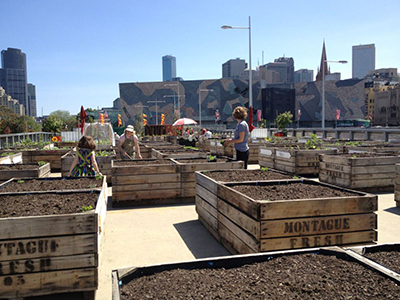
Raised garden beds
Beds filled with liners and soil - ready to go as new gardens.
-
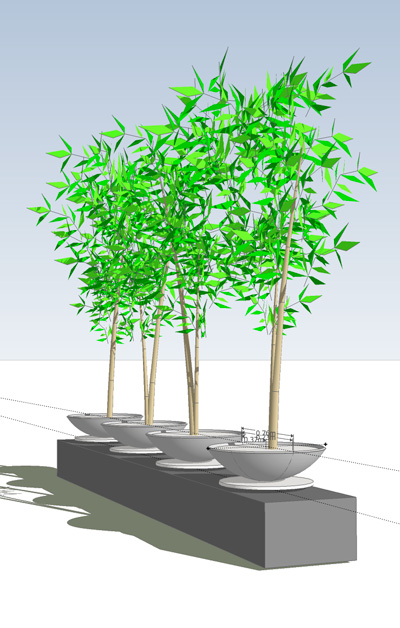
Power Plant array
Small array setting on linear plinth providing for generator series.
Apple crates are recycled and re-purposed with liners, soil, worms mulch and seeds to the most appropriate gardener's recipe.
There are significant advantages in starting with this environment. It's a system which has a large following of gardeners of every persuasion - old, young, experienced and abso;ute beginners. Kids love running through the patch playing and exploring among the garden beds.
Importantly, the beds are easily moved and re-orientated with the on-site trolley jack. Fantastic!
Choosing the right plant species will be based upon location, climate and local council planning recommendations. The City of Melbourne has developed an Urban Forest Strategy to address sustainability and minimise plant disease.
Here's an extract from the CoM 'Tree planting' site - relating to diversity.
The City of Melbourne now has a unique opportunity to redefine our city’s tree population to one that is resilient and healthy, providing maximum benefits well into the future.
The Urban Forest Strategy recommends that the municipal tree population be comprised of no more than five per cent of one tree species, no more than ten per cent of one genus and no more than 20 per cent of any one family. Melbourne has low diversity in its tree stock. Just three species – Plane, Elm and Red River Gum – make up almost 35 per cent of Melbourne’s trees.
A lack of diversity in plant species and age is putting our tree stock at great risk. Just as you would diversify financial assets, a diverse urban forest with many plant species and varying life expectancies reduces vulnerability and risk. Melbourne’s trees are highly vulnerable to disease. Myrtle Rust, a disease that has spread in Queensland, has the potential to infect and possibly kill more than 45 per cent of our trees.
The Tree Selection Matrix Interactive Tool
The Urban Forest Tree Diversity Guidelines employ a tree selection matrix as the interactive tool for tree species selection. Refer to the CoM Urban Forest Diversity Guidelines
-
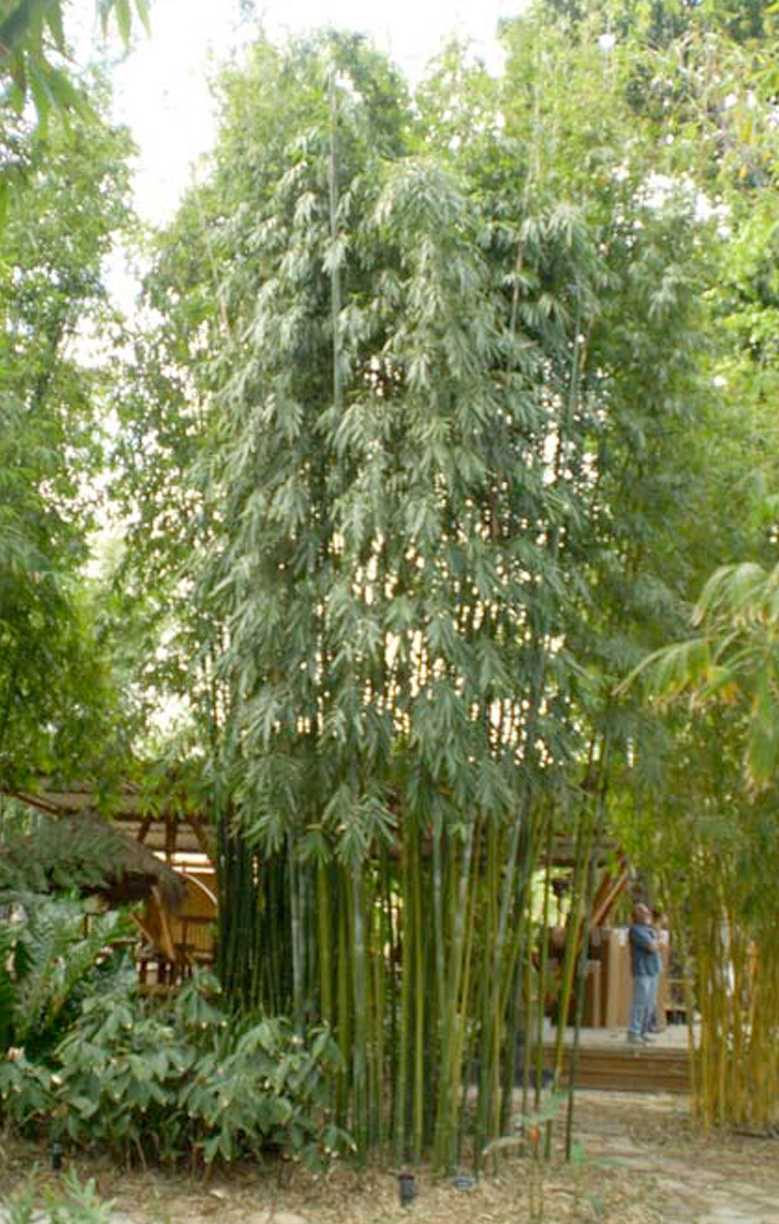
Bamboo - Emerald
-

Bamboo - Gracilicus
Visitors are welcome to inspect the 'in-principle' prototype during business hours, and a personal tour is encouraged by appointment. Call Richard on 0413 168 741
The initial test site sits in the Melbourne CBD on top of the Federation Square car park.
studioButcher rents space with the 'Pop-Up Patch', a community garden run by a small business - 'The Little Veggie Patch'.
Get invitation to event
The potential for 'Power Plants' is only limited by one's imagination - and of course, design, enginering and planning standards.
Here's a brief list of potential applications.
- Domestic gardens
- Commercial forecourts
- Public gardens
- Rooftop gardens
- Fire prone properties
- Wind farms
- Marine implementation - Tidal power installations
If you have a special application in which you feel power plants would be appropriate please let us know.
The initial test site sits in the Melbourne CBD on top of the Federation Square car park.
studioButcher rents space with the 'Pop-Up Patch', a community garden run by a small business - 'The Little Veggie Patch'. The space is well suited to wind and solar energy projects, being exposed to all conditions with a 360 degree aspect.
-
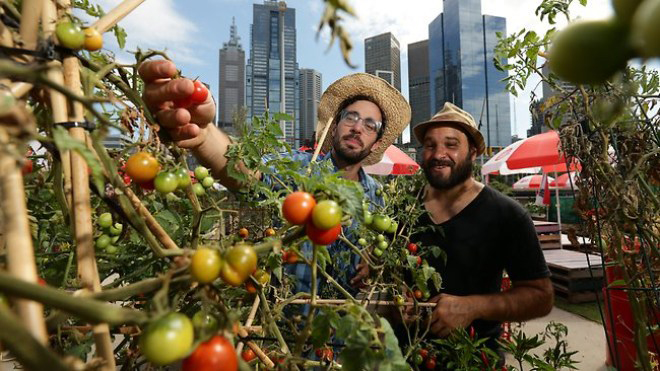
Pop-Up Patch
Located in Melbourne's CBD, this is a community garden with plots available for rent. Here's a shot of Matt and Fabian of the Little Veggie Patch admiring our crop of Tommy Toes!
-

Early days on The Patch
Over 100 apple crates provide an opportunity for CBD gardeners.
-
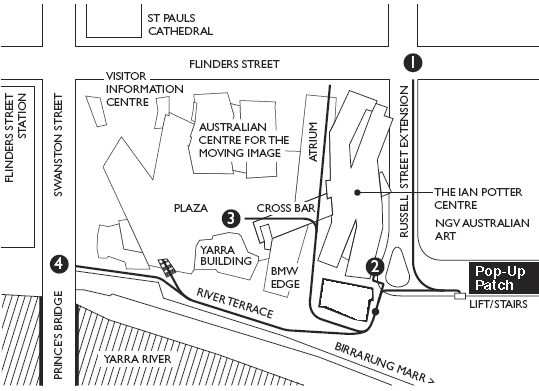
Site map
Located on Federation Square East atop the carpark.
Planter pot (mini) and Gimbal (maxi)
Mini: The design of the first prototype is based upon growing plants in small raised beds, and in this case, a spherical segment planter pot. We're looking into materials which satisfy the basic needs of balance, mass, durability and aesthetics to form the base pots. At present the pot is a 25kg reinforced concrete casting, and has been cast into a simple plastic mold.
Maxi: Following the successful testing of the 'Mini' design we're developing a larger plant bed design to accommodate bigger plants, and even trees! This new iteration has the potential to deliver significantly larger power outputs, along with greater flexibility in plant selection. Stay tuned for updates.
Geometry: In geometry, a spherical cap or spherical dome is a portion of a sphere cut off by a plane. If the plane passes through the center of the sphere, so that the height of the cap is equal to the radius of the sphere, the spherical cap is called a hemisphere.
Sail: The vertical mast is supported by a coated steel tri-pod with the timber mast clamped at the foot to a cradle inside the pot. It is envisaged that this structure will be galvanised steel components to withstand the elements.
Peristaltic pump: There is no contamination of the pump or fluid
Ideal for slurries, viscous, shear-sensitive and aggressive fluids.
Easy to install, simple to operate, inexpensive to maintain.
Pump design prevents backflow and syphoning without valves.
Wide range of tubing includes industrial, food-grade and medical
The first test bed was installed at 'The Patch' on October 12, 2013. Fine tuning of the proof of concept is currently under way.
Visitors are welcome to inspect the prototype during business hours, and a personal tour is encouraged by appointment.
Staged introduction commencing with launch event.
Envisage encouraging others to get involved in creating a network of small arrays around the world under which a few people can gather with a drink to experience and discuss the project ideas along with options and alternatives for moving forward.
Get invitation to event
Details to come, including outline for instruction manual and develoment of a network of growers.










